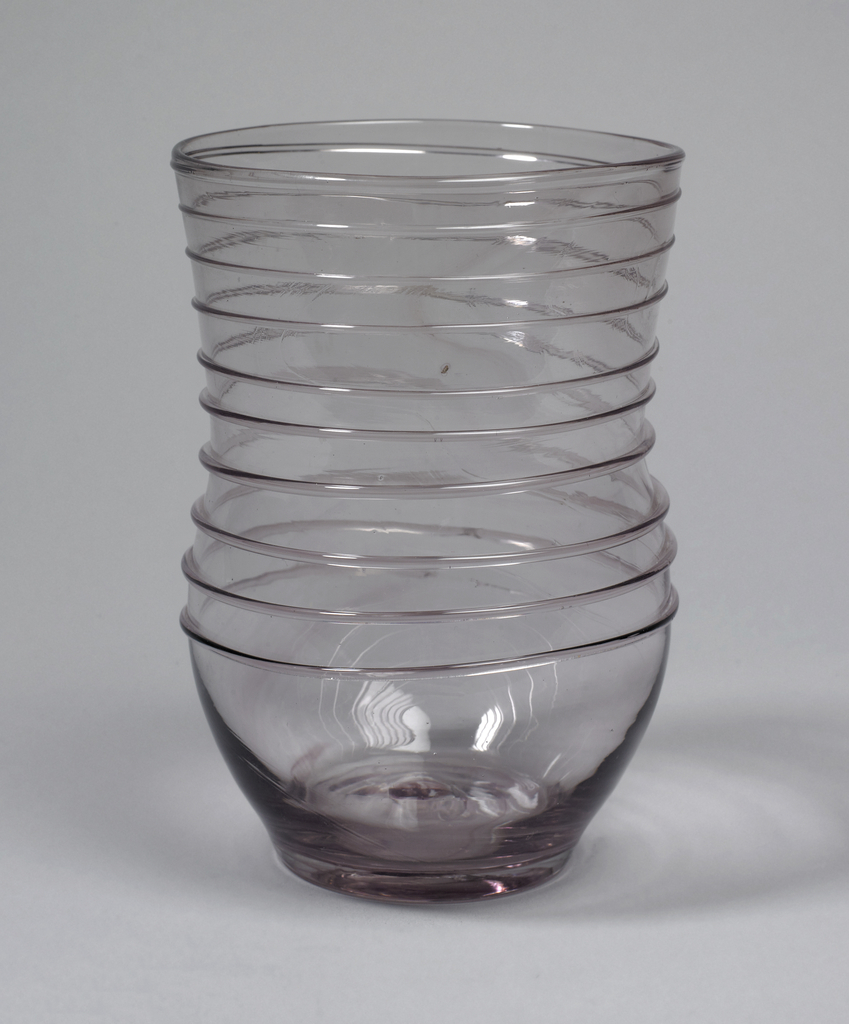Blenko glass represents the combination of technological advances in glassmaking with the original designs created by designers, with a focus on color, a key part of it impact. First producing flat glass for windows, including stained glass for the windows of St. Patrick’s Cathedral in New York City, the company earned national recognition especially for the creation of a strong red glass that could be double fired. Red is a notoriously fugitive color in glass, and the ability for it to be double fired and not lose color enabled enamel painters to paint on it. Soon this color and others were applied to tableware; the first tableware catalogue appeared in 1929, and was followed by patronage by major department stores. Devoted to handmade glass, some of the early pieces emulated Venetian glass with irregular shapes and texture to emphasize the handmade elements. At the same time, there was an eye to how handmade and modern lifestyle could co-exist in a design idiom. As a testament to the popularity of Blenko’s early tableware, the White House acquired a collection.
This vase, one of the earliest Blenko designs with applied decoration, is documented as a line drawing in an early Blenko ledger, reproduced in Eason Eige, "Blenko Glass 1930-53", p. 136, although the original drawings and ledger are now missing. A similar example with a Blenko label is in the Huntington Museum of Art in West Virginia. It shows the skill of applied coil decoration and an unusual color, an amethyst or lavender, made with the freedom of form unusual in the United States at that time.
